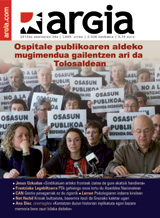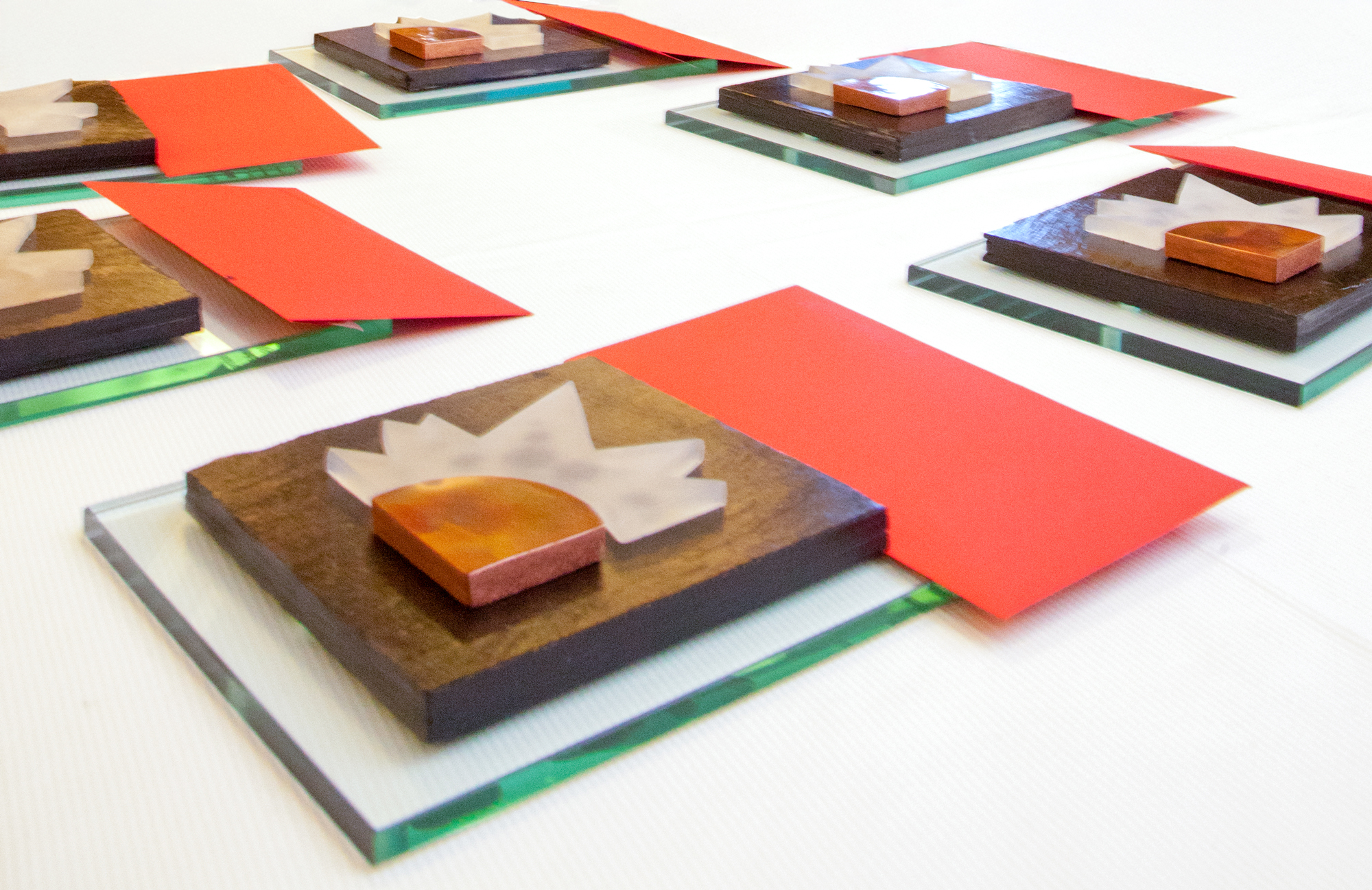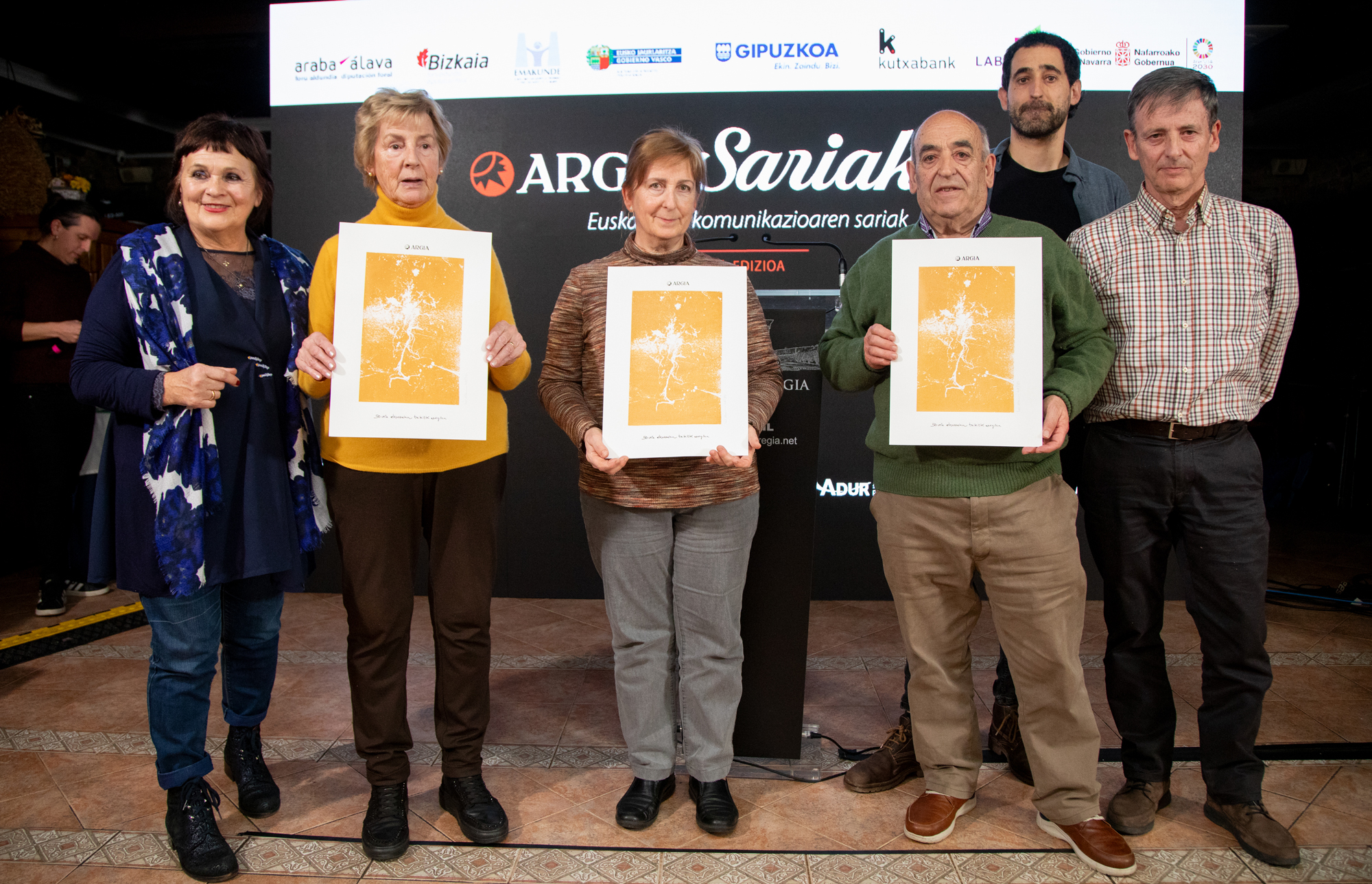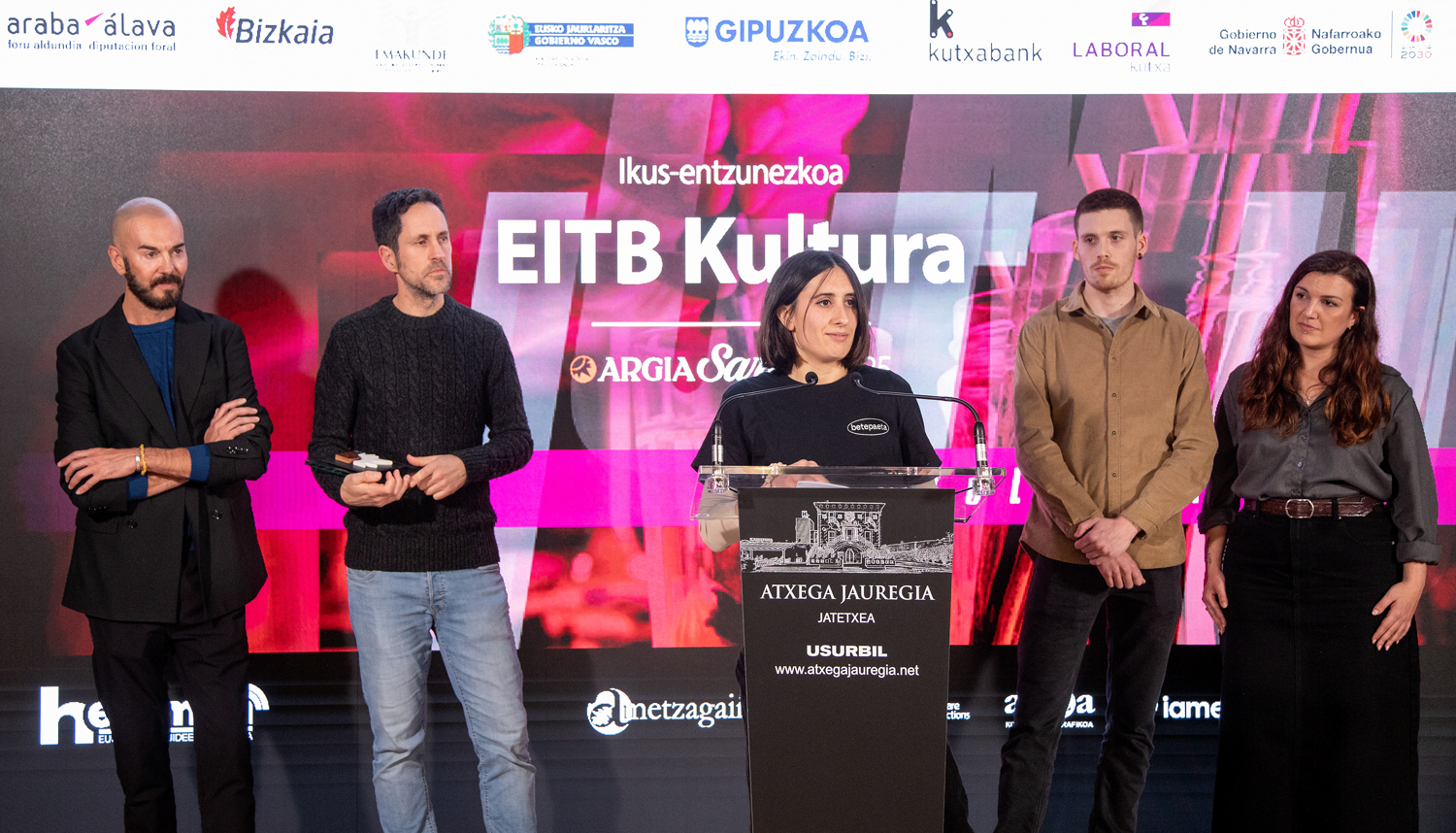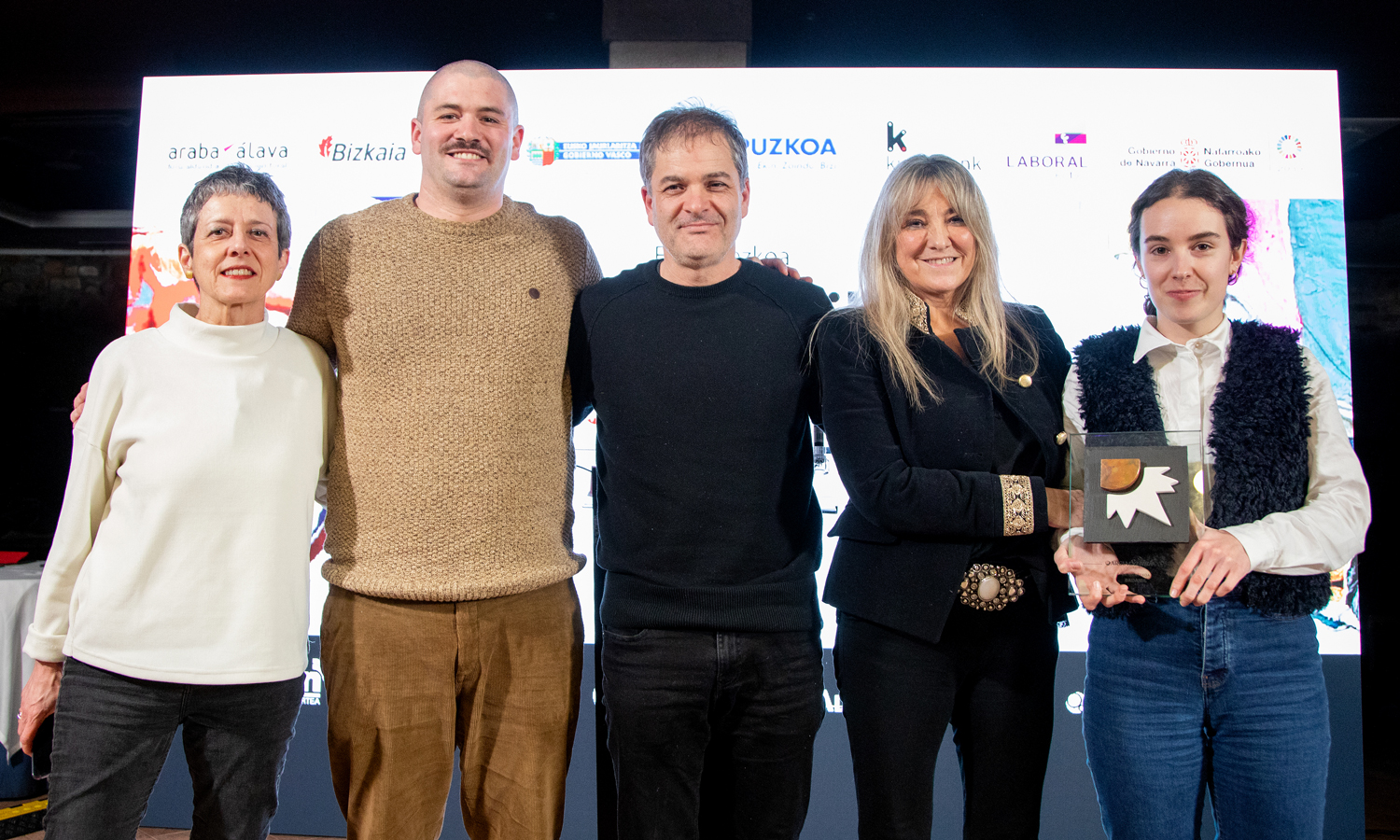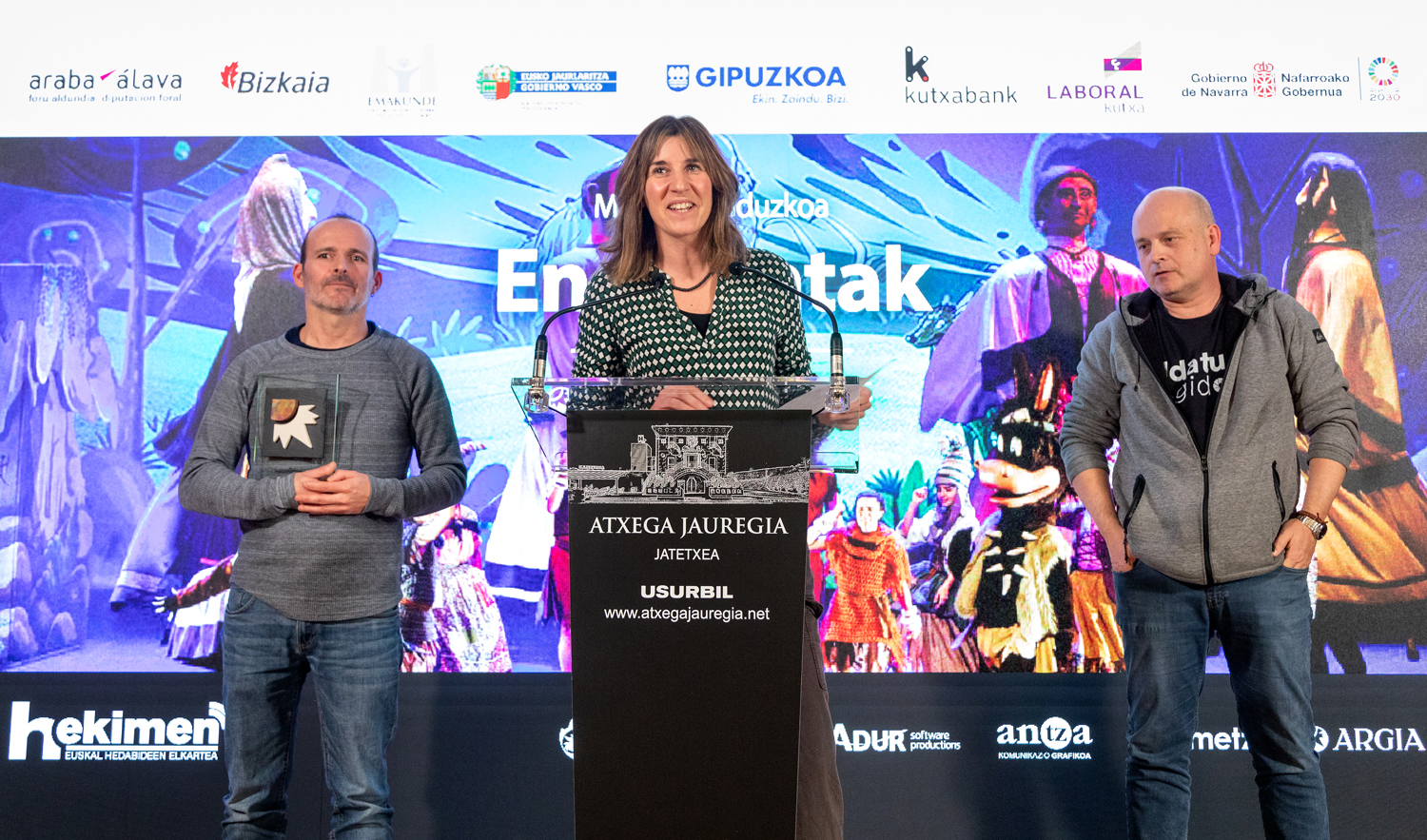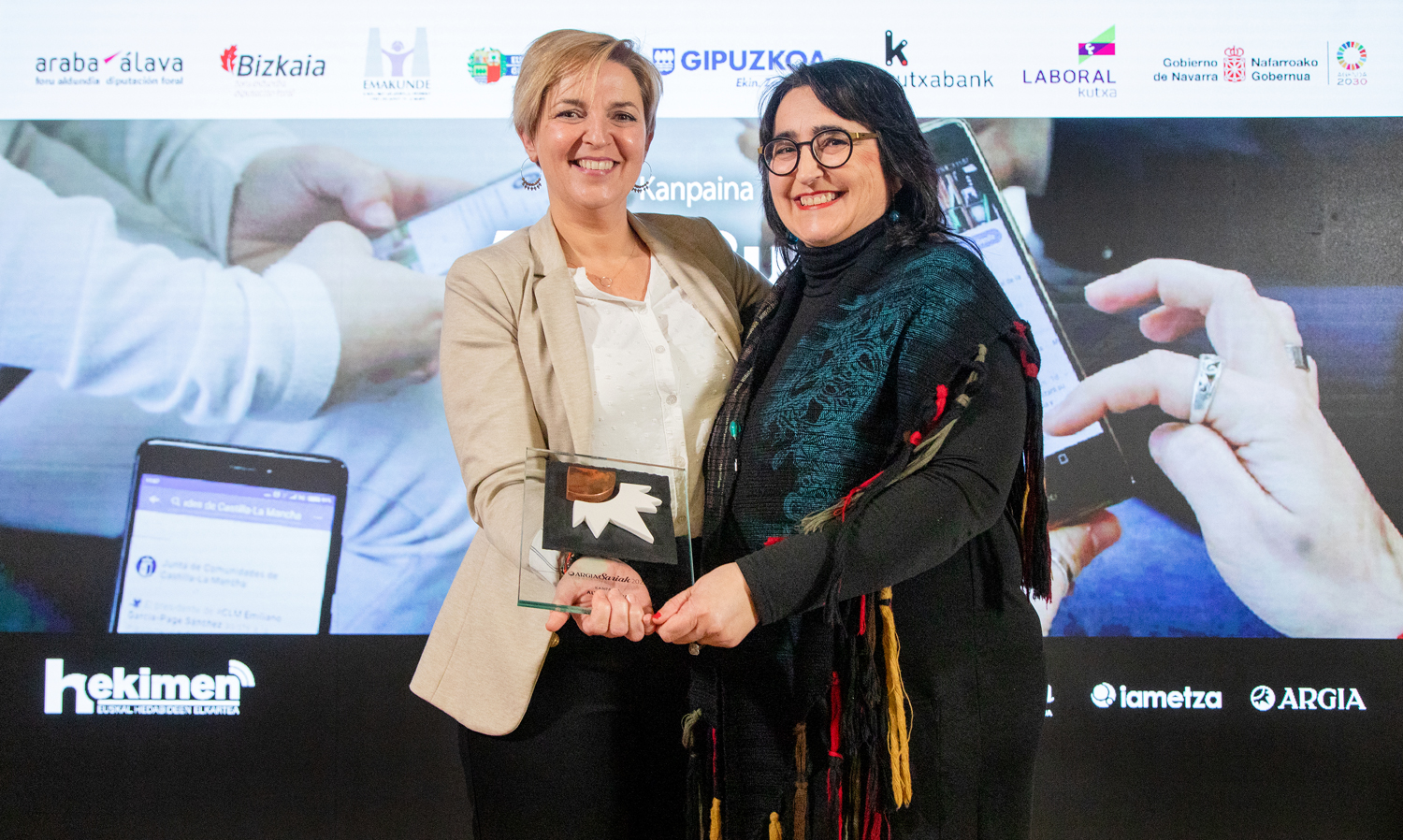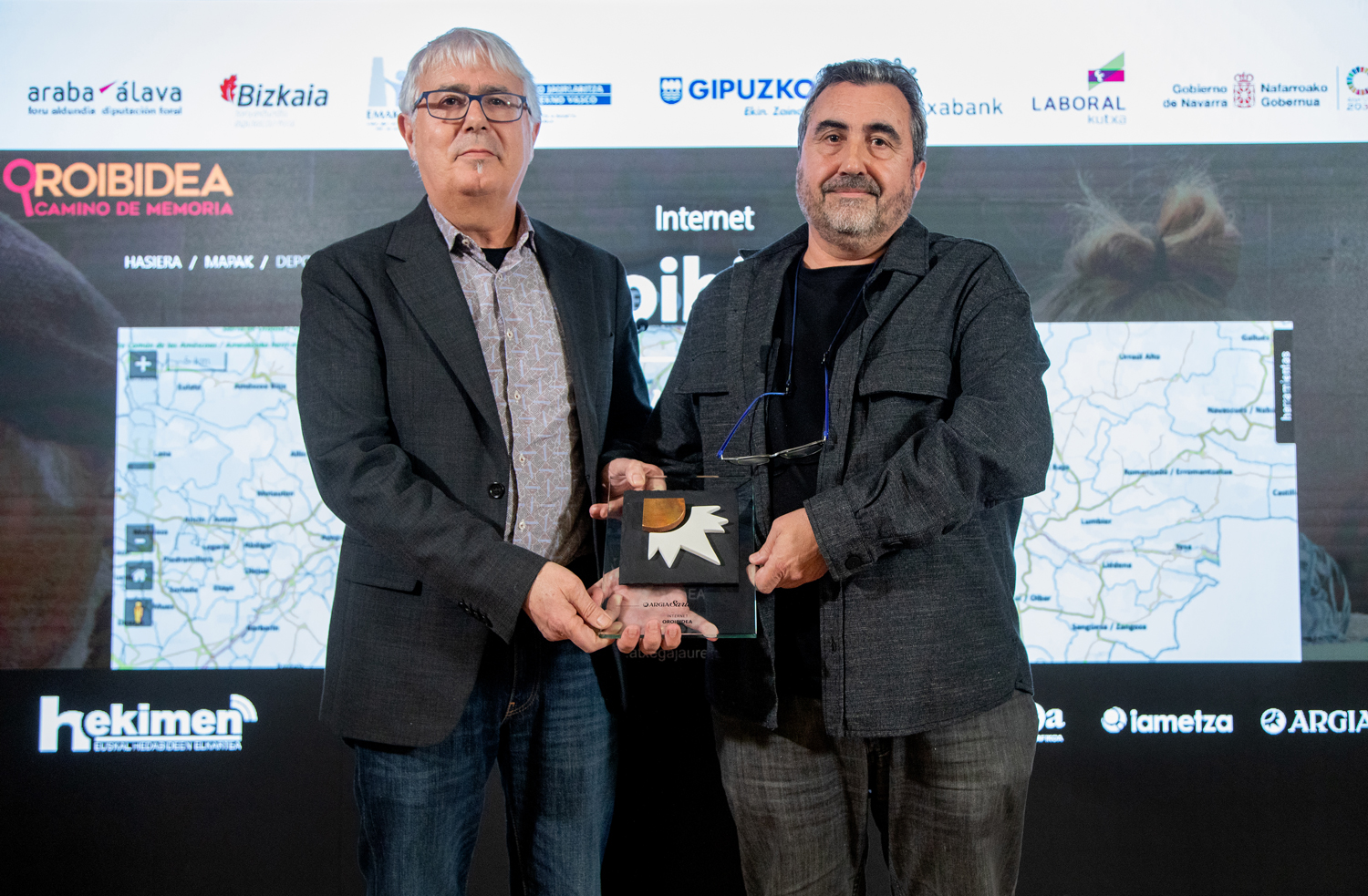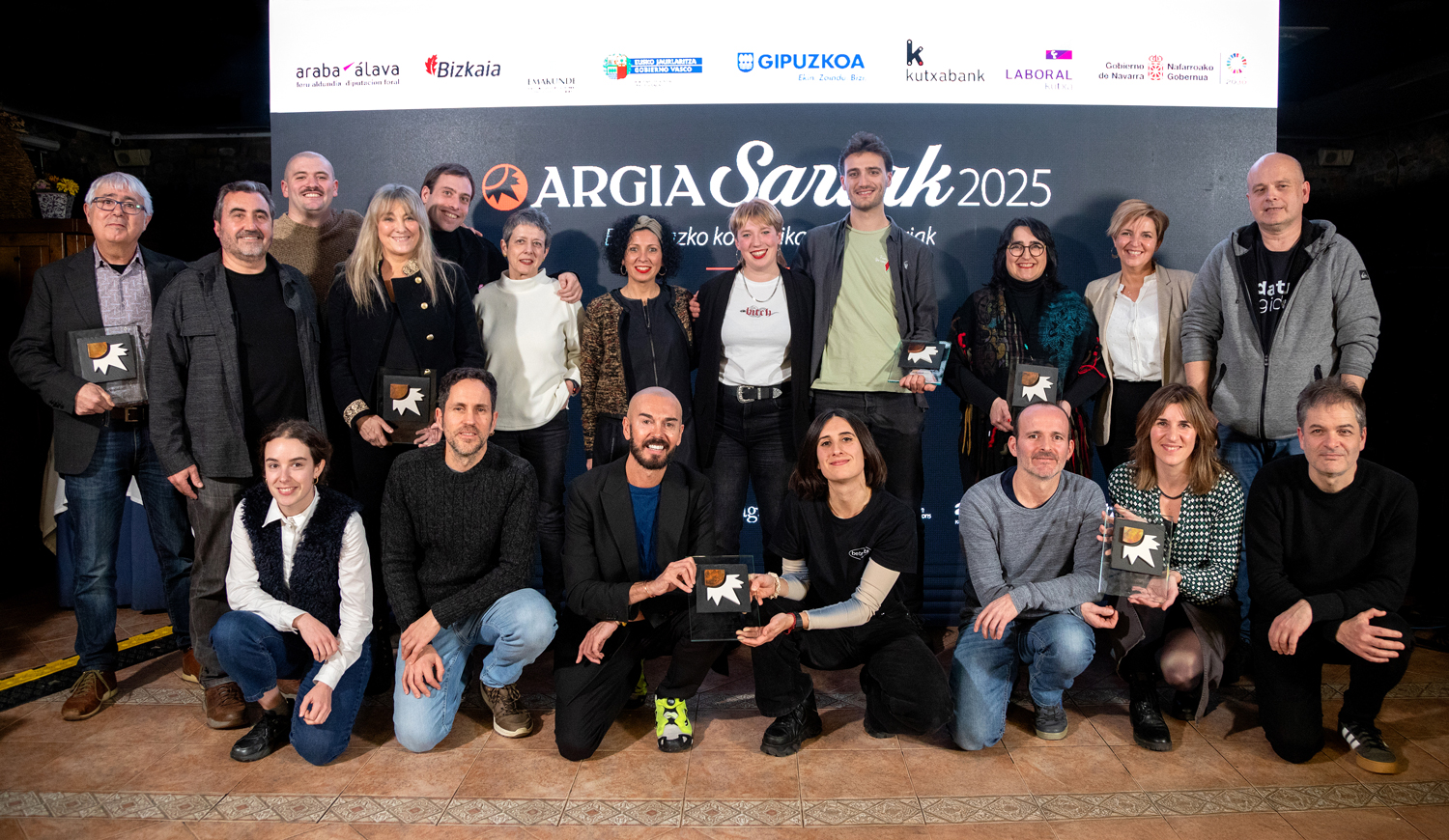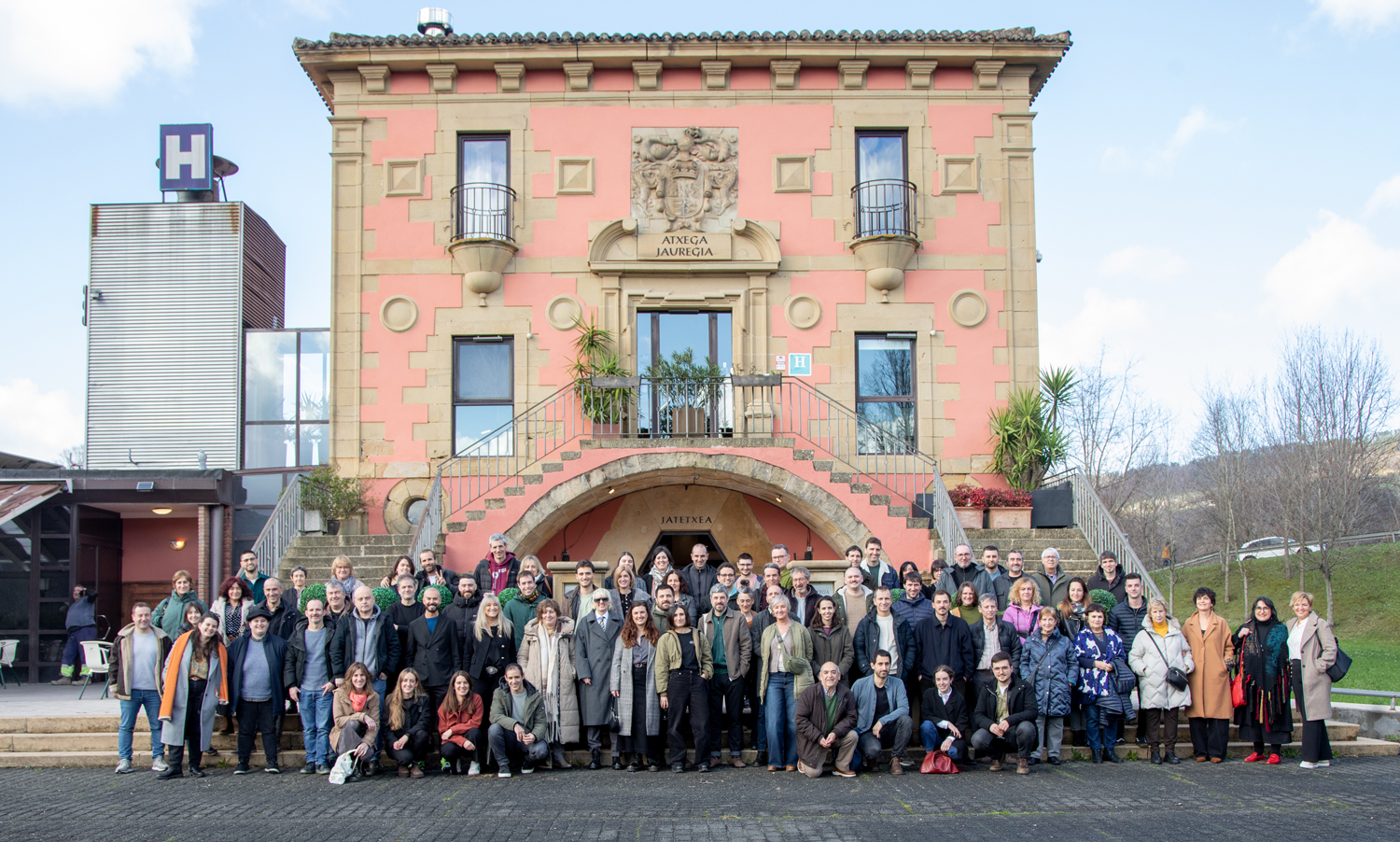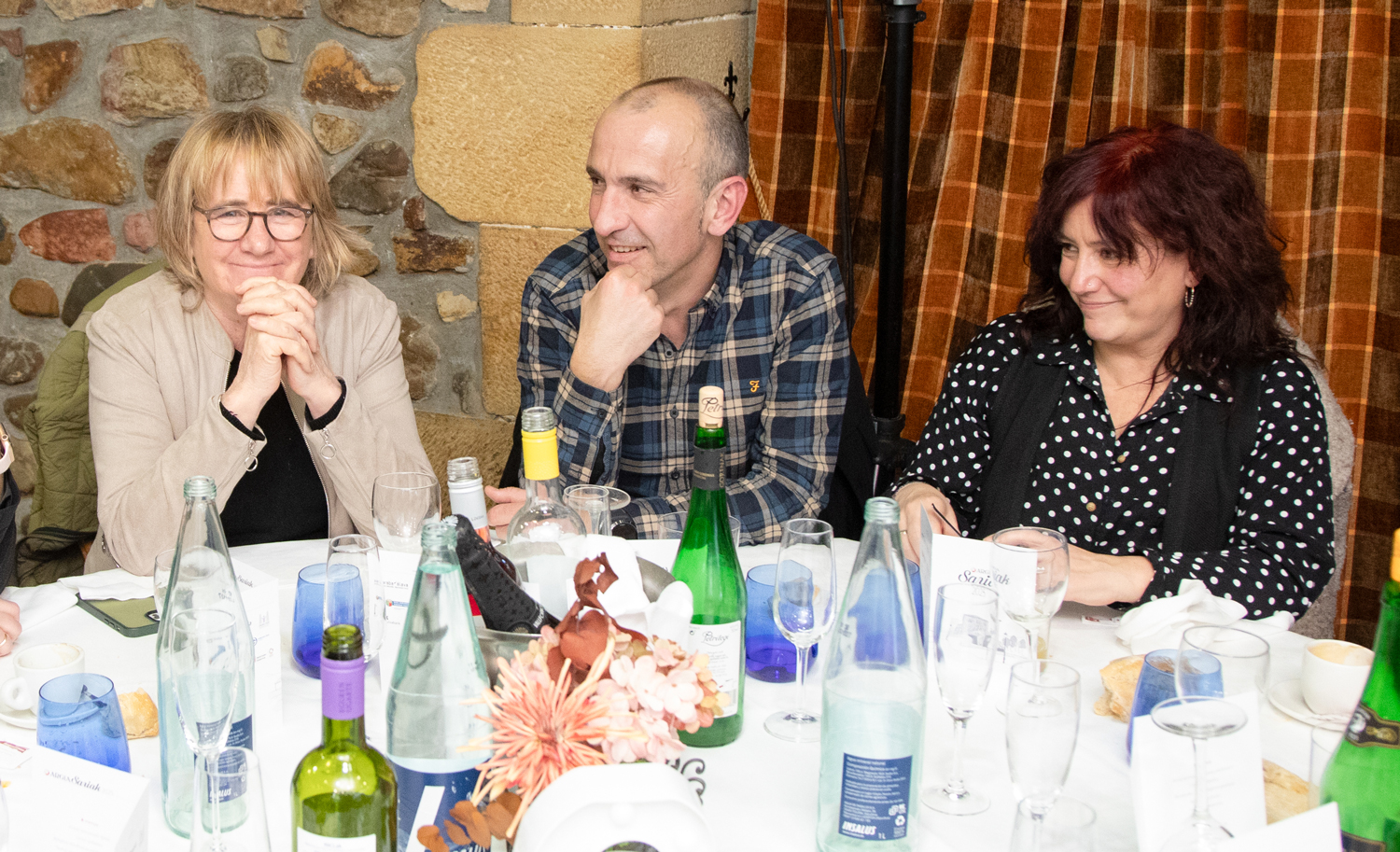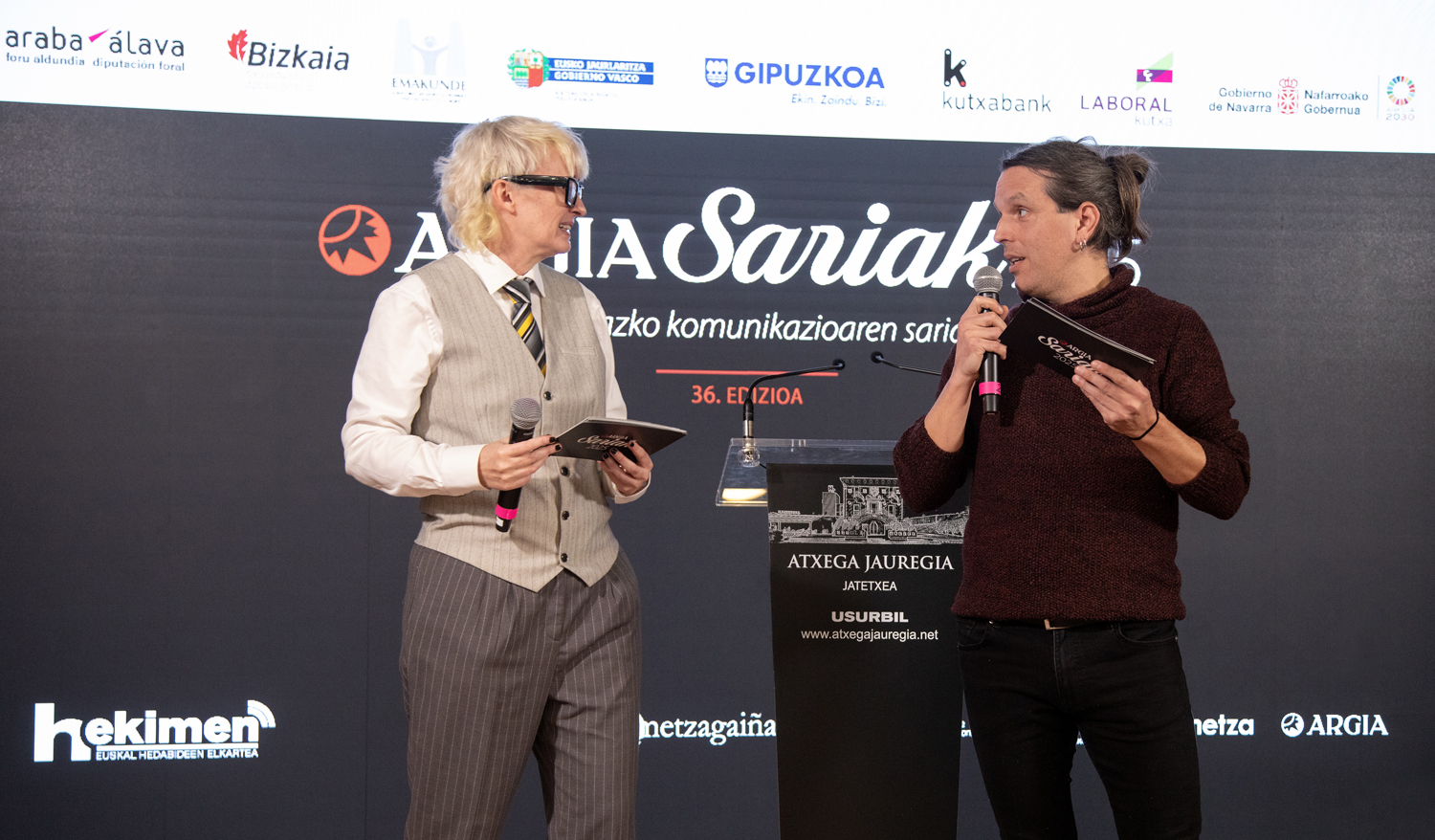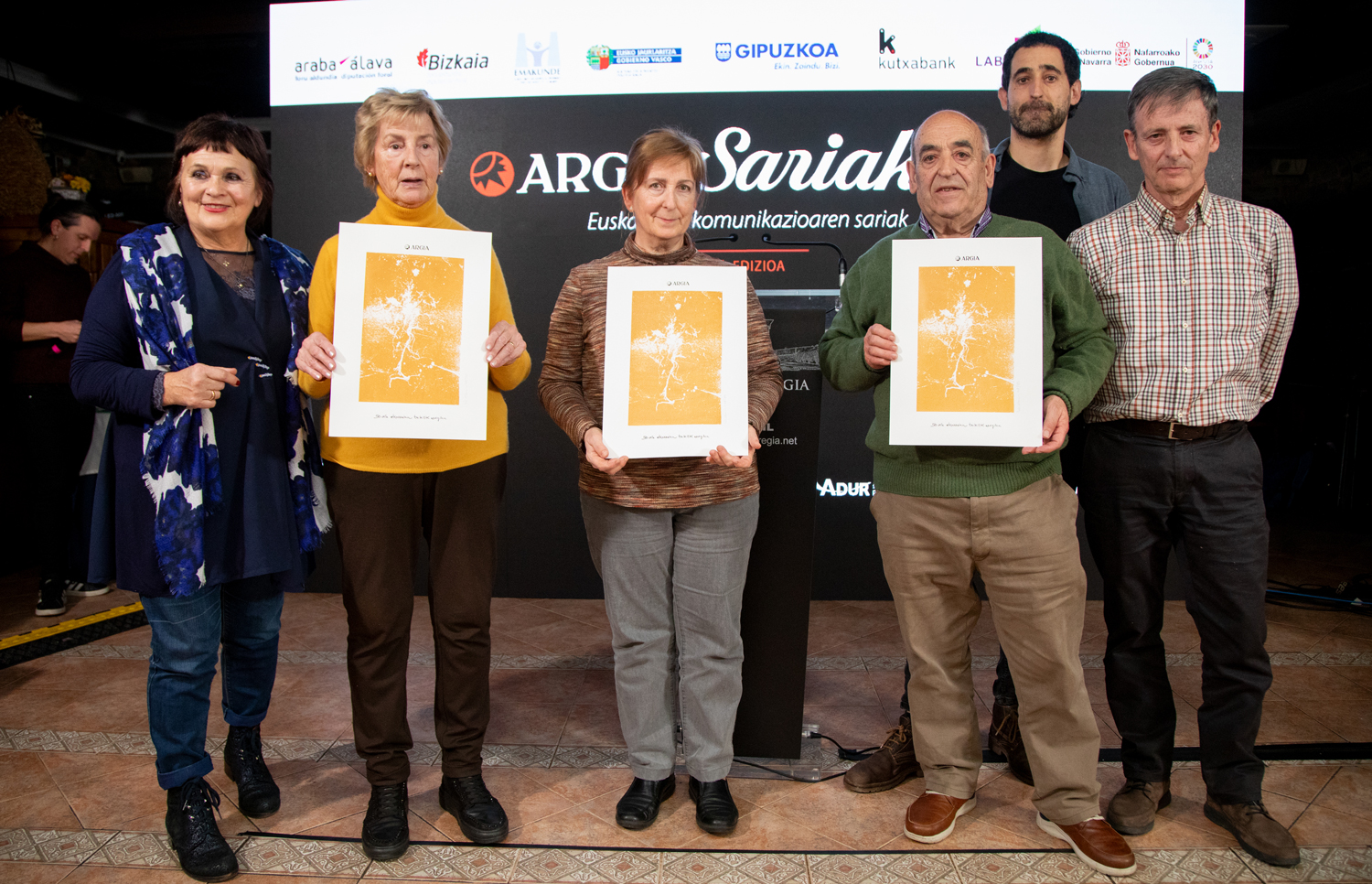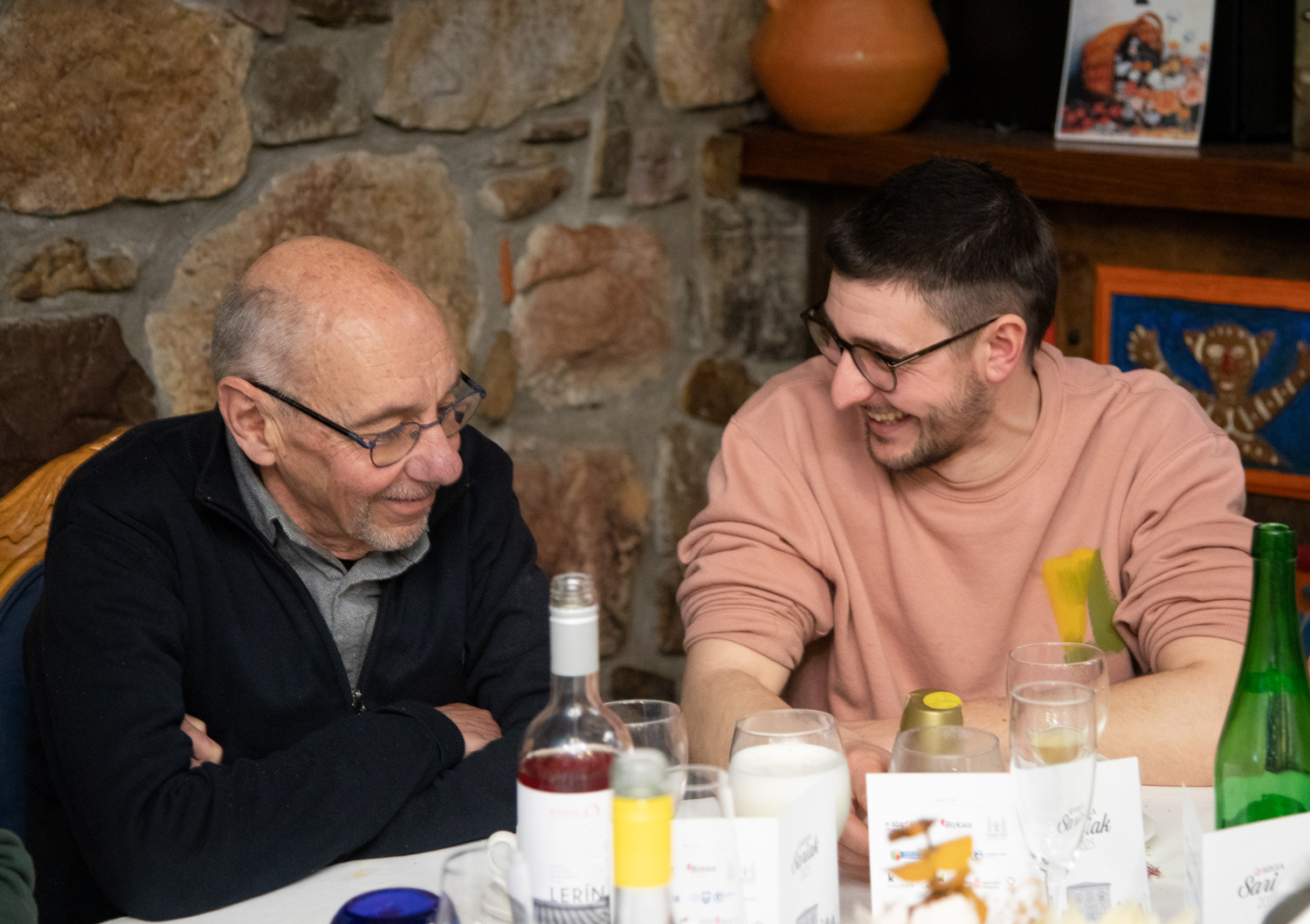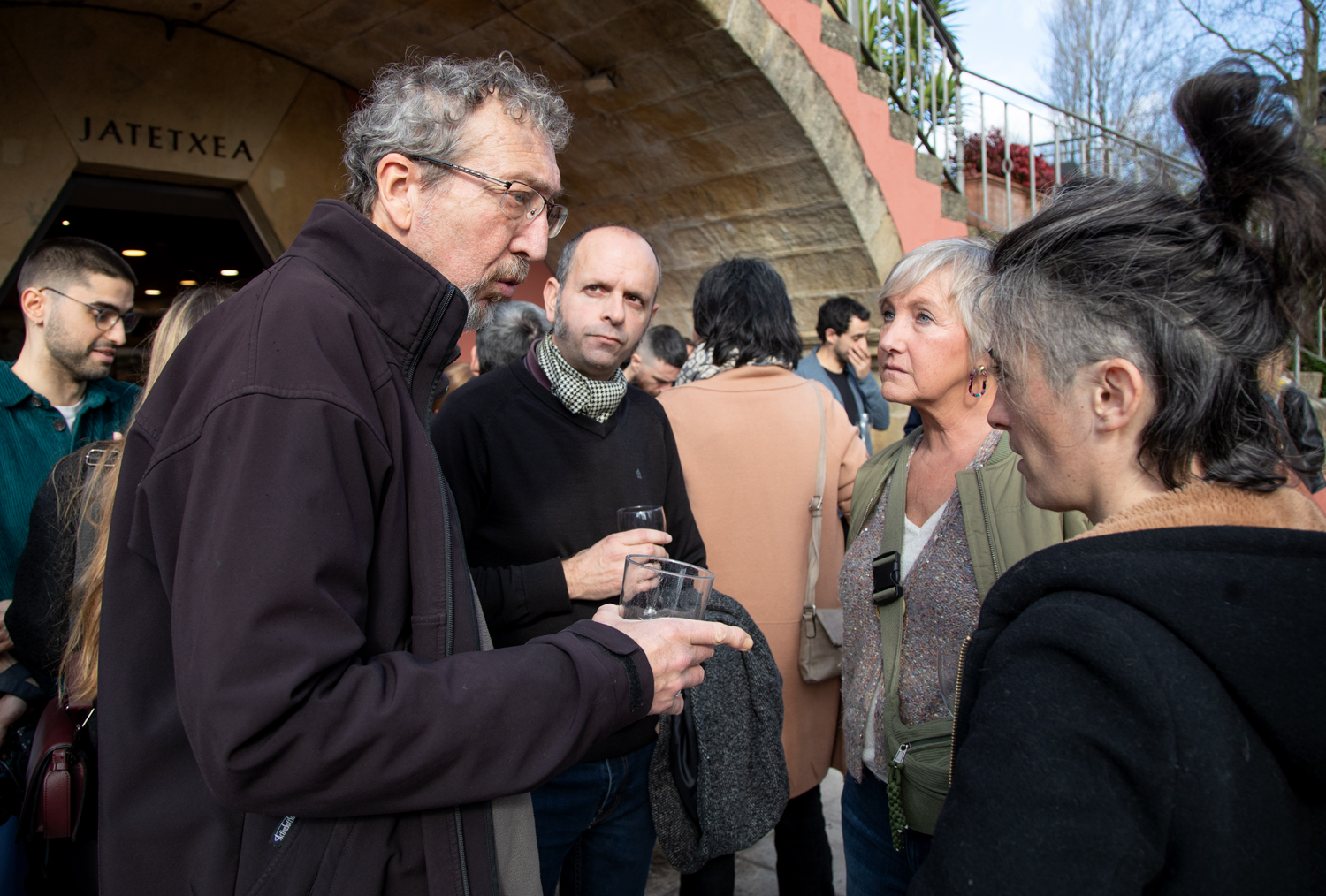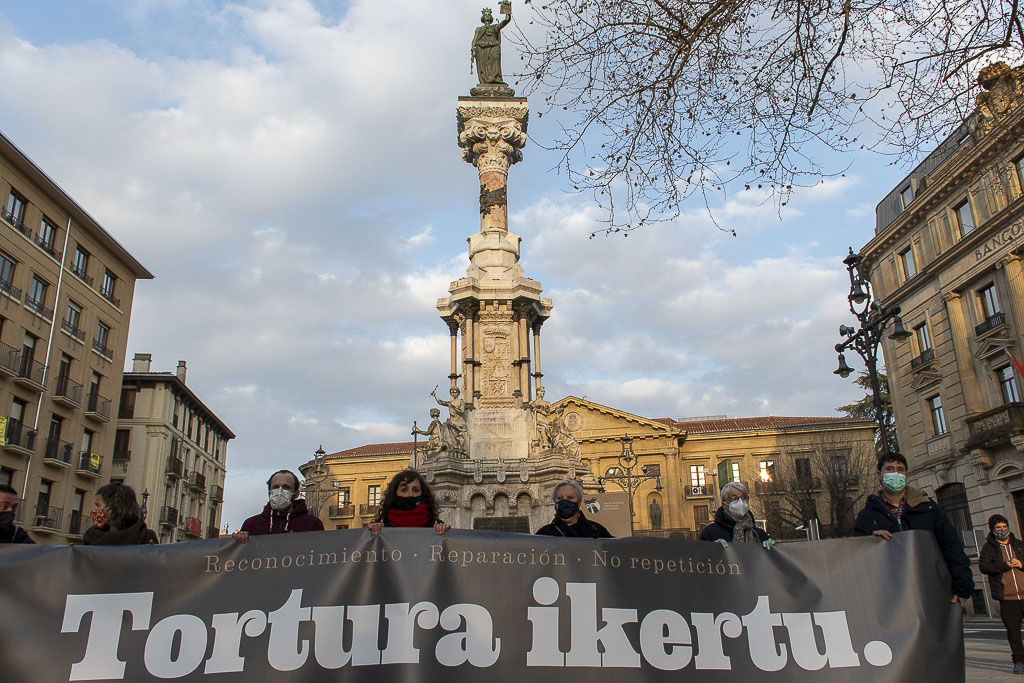Learning the people
- In the Middle Ages the boys and girls of the local ikastola Langaitz have learned what Errenteria was like this course. To this end, the brochure Itsas Ertzean has been prepared, which seeks to know the people and disseminate them through a project that aims to make the cultural heritage of the people known.
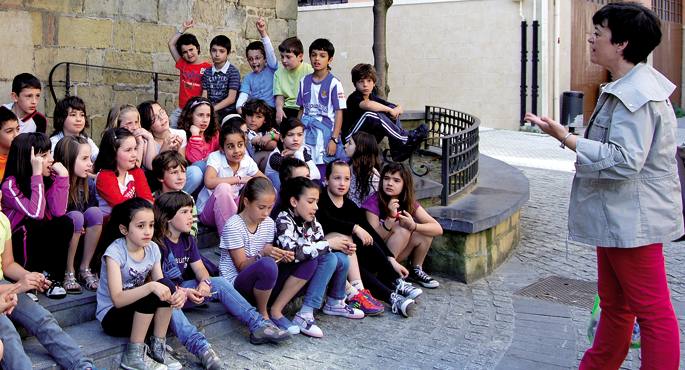
It is 9:20 in the morning and we have met in front of the chapel of Madalena de Errenteria with the students and teachers of the ikastola Langaitz. On the seashore, 8-9-year-old boys and girls have just finished producing a book about the village and have gone out into the street to see if they master what they learned in class. Through this leaflet we have seen the characteristics of Errenteria in the Middle Ages, the importance of the port or the relationship of the life and activity of the people with the sea. In addition, they have known the changes suffered by the people when Castile was made with the lands that had previously belonged to the Kingdom of Navarra: The change in the name of the people and the amuralling, among others.
At ikastola Langaitz, as in six other centres in Errenteria, they have chosen to turn the village into a lesson. In order to know the cultural heritage of the town and ensure its transmission, the City Hall proposed to the Basque Educational Project Hik Hasi the creation of a comprehensive educational project. The result has been six booklets or didactic units to work specific historical moments at different ages. From the very beginning, the participation of the citizens themselves has been sought and, in addition to the seven schools that have implemented the project, many associations and local agents have had the opportunity to contribute their bit; after listening to the proposals and the changes of all, they began to design each unit.
In particular, the project has taken into account the following objectives: to strengthen the awareness of the citizens, to promote the Basque culture and the normalization of the Basque Country, to disseminate the accounts and information of the locality among the youth, to work the training and dissemination with the educational centers, to facilitate integration and, above all, to generate in the citizenship, curiosity and attachment for the people, history and life. According to Arantxa Urbe, a worker of Hik Hasi and coordinator of the project, the construction of a people begins with the knowledge of the people: “You can’t love something you don’t know, if you don’t want you can’t get involved and if there’s no implication, how will the people advance?”
Down the medieval streets
Before starting the tour they have organized for today, the students are sitting in front of the hermitage. One of the children has recalled that hermitage was used 500 years ago to cure leprosy patients, who suffered from cancer. Although at the moment the doors are closed, another has added that the festivities of La Magdalena open its doors to music groups.
500 years ago they visited the village and the next stop they made it in the Plaza de los Fueros or Xenpelar. Looking around, and focusing on the elegance of the buildings, they have referred to the goods transported from Donostia-San Sebastian to Errenteria. In the Middle Ages, from where the port was located, they approached the door of Ugarritza, where they made the next stop. The students have raised their hand and besides the door of Ugarritza they have passed over where the other four doors are and the origin of the name they have. Among them, the door of Ugarritza, which opened for the carriages to the market, or the door of Navarre, which served to move to Navarre. At the height of the main door of the parish, with the City Hall opposite, they have made the last stop of the march. The students welcomed the time when the City Hall was a jail, and the teacher told them it was later a school for boys.
The students welcomed the project Getting to know the people. “We are learning things we didn’t know about our people and I like them. In addition, from time to time we go down to the village and do these kinds of excursions, it’s OK” tells a young woman.
Thanks to the six teaching units, the students have the opportunity to get to know Errenteria from prehistory to the present day. At 7-8 years old, Prehistory and History work. In the following course, they immerse themselves in the Middle Ages and then analyze the problems of the accumulation of people in Errenteria after the attacks of 1638, as well as the origin of the neighborhoods of the locality. At 10-11 years old, students analyze the floods caused by disproportionate constructions. Now it is us! The fifth book talks about the consequences of the Carlist War and the Civil War on the people. Finally, in the sixth chapter, the intention is to raise awareness about the use of Euskera in Basque society.
Learning through the game
Each didactic unit collects dynamic exercises for the students. Crossword puzzles, exercises with photographs and images of the people, secret messages to be clarified, explanations about the media and associations of the people and stories about important characters of the time, among others. “We work the accounts nearby, the ones here, and that’s what students like,” says Professor María Premio. In the case of well-known characters, Urb has recognized that they have made a special effort to disseminate official historiography, as most of the official historical characters are priests or navigators, and have wanted to give a greater perspective.
The time has come for the hamaiketako to be distributed before the end of the march. The student recalled that she was a woman who asked about the history of Mari Zozaia and, taught by her grandmother, made ointments with medicinal plants. Mari's life had a sad ending, as it was denounced by some well-known and accused of witchcraft.
The students of Langaitz Ikastola are about to finish the final course. They have given considerable thought to what happened in the Middle Ages and have now closed the last page of the leaflet on the Basque coast. However, there is still much to be learned, asked and researched about the history of the locality, and that is what they will do again in the next course.
Errenterian bezala beste hainbat herritan ere antzeko egitasmoa lantzen ari dira. Ordizian esaterako, harago joan dira eta paperezko euskarriaz gain web interaktiboa eratu dute, ikasleek beraien ariketak eta lanak igo ditzaten. Aipatu web orrialdea baliagarria izango zaie informazioa elkartrukatzeko. Oraindik ikastetxeetan lantzen hasi ez badira ere, Erdi Aroari buruzko unitate didaktikoa prest dute. Liburuxka horretan, Kattalin izeneko neskatilaren bitartez Ordizia nola hazi eta aldatu den, azokaren historia, garai bateko bizimodua eta herriko pertsonaia esanguratsuak ezagutuko dituzte. Jolas eta ariketen artean, Patxi Zubizarretak idatzitako ipuinak eta Iñaki Muruak idatzitako bertsoak landuko dituzte ikasleek. Herritarrek Udalarekin elkarlanean osatutako proiektua da hau ere.
Proiektuarekiko interesa agertu dute beste hainbat herritan ere, tartean Durangon, Etxebarrin, Arrasaten eta Azpeitian. Dagoeneko unitate didaktikoak prestatzen ari dira horietako batzuetan.
They were all in food and drink, seemingly cheerful, but some were nervous between snacks and appetizers. He would receive the prize for the second time, but he would be the first to have it in his hands. And I was nervous because the reminder had to get to the office, damn it.... [+]
Even if things change quickly and vividly, some things don’t change: The Light Awards event is one of them. This is what an outside journalist who has come to this chronicler in need has told him, along with the fact that LUZ has changed a lot before the awards ceremony... [+]
Irureta Azkun made an appointment on behalf of the LAR team:
"One of the thousands who make up the LUZ community has recently told us that sometimes LUZ is dark, that there is hard news that moves it inside. That we're doing a good job, but the bad news is knocking his throat... [+]
Arizona
Actors: Justin Garfield and Jon Plazaola...
WHEN: January 26th.
IN WHICH: The New Culture Center. In the square.
-------------------------------------------
The couple Margaret (Aitziber Garmendia) and George (Jon Plazaola) leave Idaho to guard the border between... [+]









